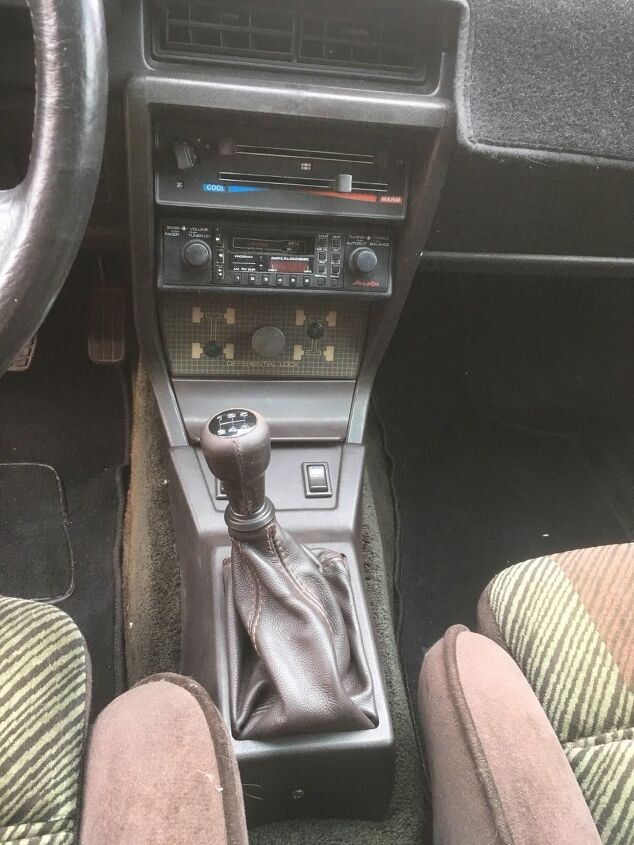Rare Rides: A 1983 Audi Ur-Quattro - the Start of It All

The Rare Ride seen here represented an important turning point in the history of all things automotive. A single vehicle which changed rallying and simultaneously made four-wheel drive a more realistic prospect for passenger cars.
Presenting the Audi Quattro.
Audi’s idea to add four-wheel drive to a production car came about in 1977, when one of its engineers noted how the Volkswagen Iltis jeep outperformed much more powerful vehicles in slippery conditions. Project idea approved, the engineers picked a starting point with the existing Audi 80, and set to work.
Ready for the latter part of the 1980 model year, the Quattro was released first to the European market. Featuring the company’s new permanent four-wheel drive system, 197 horsepower from the turbocharged 2.1-liter inline-five engine flowed to all four wheels via a five-speed manual.
The North American market (perhaps as expected) received the Quattro later than other parts of the globe, as the first ones arrived in dealers for 1983. North American Quattros had chunky bumpers, no ABS, and mostly leather interiors. The Audi’s only relative competition in the market space was of course AMC’s Eagle; the first mass production four-wheel drive passenger car.
But passenger car sales weren’t the only goal. Audi had rally intentions for its Quattro, and was able to take advantage of recently changed regulations that allowed four-wheel drive cars to enter the World Rally Championship. The Quattro was the first to use four-wheel drive, promptly trouncing most of the competition. The Quattro placed in the top five for the overall WRC season each year between 1981 and 1986, racking up 23 pole position wins between ’81 and ’85. Audi took home seasonal gold in 1982 and 1984. About that time the competition caught up to Audi with their own four-wheel drive cars, and no two-wheel drive car has won the championship since.
Though Quattro production totaled 11,452 examples between 1980 and 1991, North American models were very scarce. Audi sold the Quattro in North America for only the ’83 through ’86 model years. The United States received 664, and today’s Canadian market Quattro is one of just 99 ever imported. Asking prices of over $50,000 circa 1983 might have had something to do with the low sales figures.
Today’s silver Canadian features a tweedy brown interior, and is in generally excellent condition. Critically, it remained mostly stock, avoiding the low-rent add-ons and edits some Quattros experienced. With around 48,000 miles on the odometer, it’s yours for $40,000.
Edit: It was yours for $40,000. Since time of writing, the eBay listing reached $22,400 (under the reserve) and ended. The Quattro was sold via private sale to a new owner.
[Images: seller]

Interested in lots of cars and their various historical contexts. Started writing articles for TTAC in late 2016, when my first posts were QOTDs. From there I started a few new series like Rare Rides, Buy/Drive/Burn, Abandoned History, and most recently Rare Rides Icons. Operating from a home base in Cincinnati, Ohio, a relative auto journalist dead zone. Many of my articles are prompted by something I'll see on social media that sparks my interest and causes me to research. Finding articles and information from the early days of the internet and beyond that covers the little details lost to time: trim packages, color and wheel choices, interior fabrics. Beyond those, I'm fascinated by automotive industry experiments, both failures and successes. Lately I've taken an interest in AI, and generating "what if" type images for car models long dead. Reincarnating a modern Toyota Paseo, Lincoln Mark IX, or Isuzu Trooper through a text prompt is fun. Fun to post them on Twitter too, and watch people overreact. To that end, the social media I use most is Twitter, @CoreyLewis86. I also contribute pieces for Forbes Wheels and Forbes Home.
More by Corey Lewis
Latest Car Reviews
Read moreLatest Product Reviews
Read moreRecent Comments
- Calrson Fan Jeff - Agree with what you said. I think currently an EV pick-up could work in a commercial/fleet application. As someone on this site stated, w/current tech. battery vehicles just do not scale well. EBFlex - No one wanted to hate the Cyber Truck more than me but I can't ignore all the new technology and innovative thinking that went into it. There is a lot I like about it. GM, Ford & Ram should incorporate some it's design cues into their ICE trucks.
- Michael S6 Very confusing if the move is permanent or temporary.
- Jrhurren Worked in Detroit 18 years, live 20 minutes away. Ren Cen is a gem, but a very terrible design inside. I’m surprised GM stuck it out as long as they did there.
- Carson D I thought that this was going to be a comparison of BFGoodrich's different truck tires.
- Tassos Jong-iL North Korea is saving pokemon cards and amibos to buy GM in 10 years, we hope.








































Comments
Join the conversation
I'm curious how trashed the dash is under that carpet cover...
The Quattro Turbo was a parts bin special. The turbo and AWD were bolted on the Coupe. Along with the auxiliaries; oil cooler, injector cooler (fan with duct to blow air over injectors), and later cars had an extra electric water pump to circulate coolant after shut off. With all that stuff they were a tough job to work on. The exhaust system in the turbo area was known to come loose regularly and was very difficult to get to. The oil cooler seals leaked a lot. Probably because it was near the turbo and the seals got cooked. Glad I don't have to work on them now.